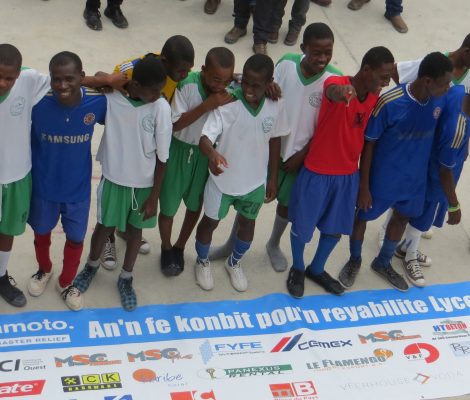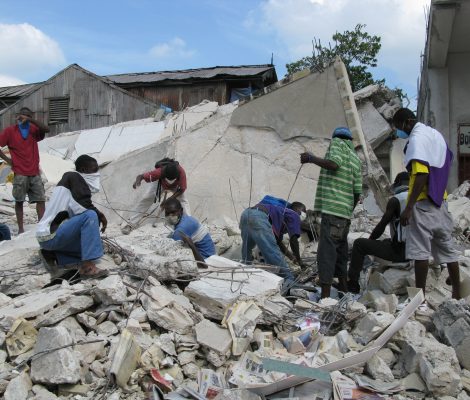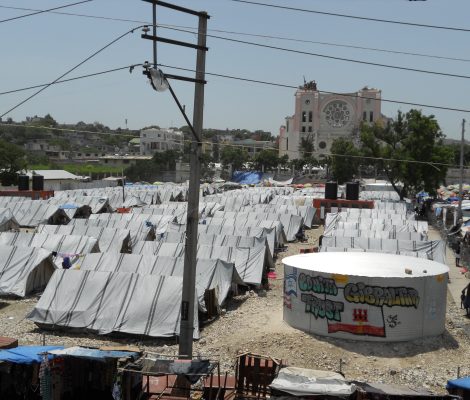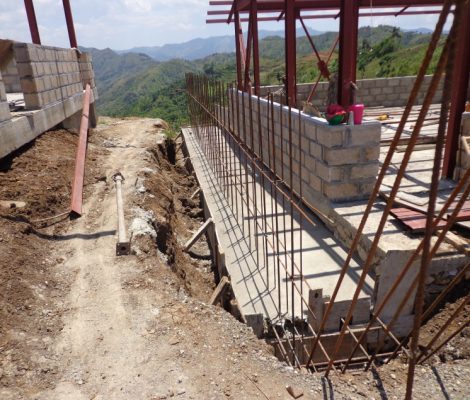Post series: Miyamoto in Haiti
Miyamoto in Haiti: Self-Sustaining Relief
Posted in Guest Journals, Haiti
This post is part of a series called Miyamoto in Haiti
As a structural engineering student travelling to Haiti with a small group of fellow students (SESH), I intended to apply my knowledge of structures in a way that would develop communities and directly benefit people. During my brief, yet eventful, 10-day visit, I encountered the reality, obstacles, and successes of a nation susceptible to devastating natural disasters.
As a foreign volunteer group seeking to aid a society distressed by an earthquake, I realized we are not alone in this endeavor; many non-profit organizations have made their way to Haiti…
Miyamoto in Haiti: Visiting a Remote School Construction Site Near Cap-Haïtien
Posted in Earthquake Field Reports, Haiti
This post is part of a series called Miyamoto in Haiti
In collaboration with UNICEF and the Haiti Ministry of Education, Miyamoto International has engineered and is managing the construction of 14 school campuses in Haiti. These schools are located in extremely remote areas where we’re using innovative steel-frame systems, the first of their kind produced and constructed by Haitian contractors. These systems make it easy rebuild quake-damaged or destroyed schools more quickly while maintaining the highest degree of quality control.…
Trente mois en Haïti, 3eme partie
Posted in Earthquake Field Reports, Haiti
This post is part of a series called Miyamoto in Haiti
Croyez-moi, c’était pénible. Mais en retrospect, c’était une des meilleures décisions que nous ayons jamais prises. Nous avions sélectionné 16 entrepreneurs et leur avions formé dans la technologie et les affaires. Nous avions commandé des matériaux auprès de fournisseurs-Haïtiens locaux.…
Trente mois en Haïti, 2eme partie
Posted in Earthquake Field Reports, Haiti
This post is part of a series called Miyamoto in Haiti
Nous avons évalué chaque maison et marqué avec une étiquette verte, jaune ou rouge, et enregistré des informations structurelles et sociales détaillées en utilisant les PDA. Nous avons non seulement procédé à des tâches d’ingénierie, mais nous sommes également devenus des conseillers et des travailleurs sociaux. Les gens ont commencé à retourner dans leurs maisons respectives grace au plan de sécurité etabli, celles étiquetées en vert. La population des camps temporaires a ainsi diminué à 700 000 personnes à la fin de 2010.…
Trente mois en Haïti, 1eme partie
Posted in Earthquake Field Reports, Haiti
This post is part of a series called Miyamoto in Haiti
Je viens juste de terminer mon discours prononçer à l’Hôtel Kinam de Port-au-Prince, Haïti. Le public m’a chaudement applaudi. Je me suis senti bien, chauffé a blanc. J’avais parlé devant plus de 100 participants, y compris le MTPTC (le Ministère des Travaux publics Transport et Communication Haïtien) des ingénieurs, des directeurs de ministères, des partenaires d’organisation non gouvernementale (ONG) et des médias. Cet événement devait en effet célébrer les réalisations des ingénieurs du MTPTC suite au tremblement de terre de 2010.…
Miyamoto in Haiti: School Rebuilding and Construction Continues
Posted in Haiti
This post is part of a series called Miyamoto in Haiti
The 7.0-magnitude 2010 earthquake that devastated Haiti, killing more than 300,000 and destroying 280,000 buildings, also left many children without schools. Days later, Miyamoto International arrived in Haiti to help, ultimately creating Miyamoto Global Disaster Relief, a nonprofit to provide disaster mitigation and reconstruction following catastrophic disasters where usual funding source doesn’t exist.
Miyamoto International trained legions of engineers and masons (pictured) to rebuild and retrofit schools, homes and buildings so they will withstand future earthquakes. As Miyamoto International CEO Dr. Kit Miyamoto points out, “Earthquakes don’t kill people.…





